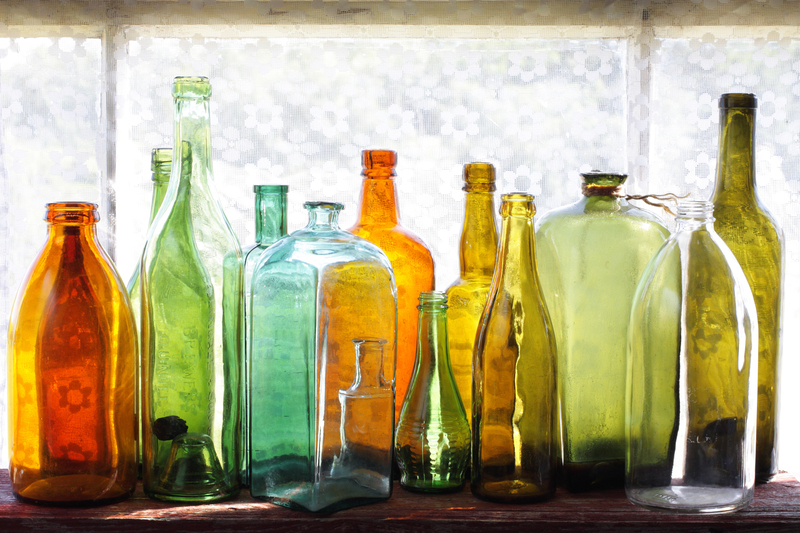Turning the Tide: Combatting Microplastic Pollution
Understanding the Challenge: What Are Microplastics?
Microplastics are tiny plastic particles less than 5mm in diameter. Despite their small size, these pollutants have a massive impact on our environment, ecosystems, and even human health. In recent years, the proliferation of microplastic pollution has become a central environmental concern for scientists, policy makers, and the public alike.But what exactly are microplastics, and why should we care? Let's explore the origins, sources, and far-reaching effects of microplastic contamination.
Types of Microplastics
- Primary microplastics: Manufactured to be small, these are found in products like exfoliating beads in personal care products, industrial abrasives, and pre-production plastic pellets.
- Secondary microplastics: Formed when larger plastic debris breaks down over time due to exposure to sunlight, wind, and water.
Whether they originate from direct industrial production or the decomposition of larger plastic waste, microplastics are pervasive in nearly every corner of our planet.

Sources of Microplastic Contamination
Microplastics enter the environment through numerous pathways. Understanding these sources is essential for developing targeted solutions to combat microplastic contamination.
Major Sources Include:
- Personal care and cosmetic products: Microbeads used in facial scrubs, toothpastes, and shower gels are washed down the drain and escape conventional water treatment facilities.
- Synthetic clothing: Each wash of fleece, nylon, or polyester garments sheds thousands of microfibers into wastewater.
- Car tire wear: Tire abrasion on roads releases billions of microscopic plastic fragments every year.
- Single-use plastics: Items like straws, bags, and bottles degrade into microplastics over time.
- Industrial processes: Spills of plastic pellets and improper disposal of industrial waste are significant contributors.
Environmental and Health Impacts of Microplastic Pollution
Microplastic pollution is a growing environmental threat. Its impacts ripple throughout the ecosystem and reach into the food chain, affecting wildlife and humans alike.
Harm to Marine Life
- Ingestion: Fish, seabirds, and turtles mistake microplastics for food, leading to physical harm, chemical exposure, and malnutrition.
- Toxins: Microplastics absorb toxic chemicals such as pesticides and heavy metals, which accumulate in the bodies of marine organisms.
- Bioaccumulation: As microplastics move up the food chain, they concentrate in predators, ultimately posing risks to human health.
Human Health Concerns
- Food chain contamination: Microplastics have been found in seafood, table salt, bottled water, and even in the air we breathe.
- Potential health risks: While research is ongoing, inhaling and ingesting microplastics may lead to inflammation, toxicity, and disruption of the endocrine system.
Global Movement: Combatting Microplastic Pollution
A global movement to fight microplastic pollution is gaining traction. Governments, organizations, and individuals are taking significant steps towards reducing plastic leakage into the environment.
International Initiatives
- United Nations Environment Programme (UNEP): Launched campaigns such as Clean Seas, aiming to reduce plastics in our oceans.
- European Union Directives: Banned microbeads in personal care products and set targets to reduce single-use plastics across member states.
- Global scientific collaboration: Scientists worldwide are collaborating on research and monitoring programs to understand the scale of microplastic pollution.
Innovative Solutions to Reduce Microplastic Waste
Tackling microplastic pollution requires creativity, innovation, and collective action. Here are some of the most promising strategies being adopted around the world:
Policy and Regulation
- Legal bans: Many countries have banned or restricted microbeads in consumer products, setting an example for the rest of the world.
- Extended producer responsibility (EPR): Companies are being held accountable for the entire lifecycle of their products, including waste management.
- Regulation of textiles: Some regions are considering legislation that requires filters in washing machines to trap synthetic microfibers.
Technological Innovations
- Washing machine filters: Devices designed to capture microfibers before they reach wastewater treatment plants are becoming mainstream.
- Biodegradable plastics: Research into alternatives such as bioplastics and new materials is reducing the reliance on persistent plastics.
- Advanced filtration in water treatment: Upgrading wastewater treatment processes to trap microscopic plastics is a key step.
Community and Consumer Action
- Reduce, reuse, recycle: Opt for reusable products, avoid single-use plastics, and support robust recycling programs.
- Responsible washing habits: Wash synthetic clothes less frequently and at lower temperatures, use a fiber-catching laundry bag, and support natural fiber alternatives.
- Advocacy and education: Raise awareness about the sources and dangers of microplastic contamination in local communities and schools.
Corporate Responsibility
Corporations play a pivotal role in reducing microplastic pollution at scale. From rethinking product design to reimagining supply chains, companies are being called upon to lead the change.
- Switching to sustainable packaging: Brands are reducing unnecessary plastic packaging and adopting eco-friendly alternatives.
- Innovation in product formulation: Eliminating microbeads from cosmetics and cleaning products has become standard practice for many firms.
- Collaboration with NGOs: Partnerships with nonprofit organizations help companies set and meet ambitious sustainability goals.
What Can You Do to Tackle Microplastic Pollution?
Individual action counts! Simple lifestyle changes can reduce your personal contribution to plastic pollution and inspire others to do the same.
Tips for Everyday Action
- Choose natural fibers: When shopping for clothes, opt for organic cotton, wool, hemp, or linen instead of synthetic fabrics.
- Avoid single-use plastics: Bring your own bags, bottles, and utensils. Say no to plastic straws and packaging whenever possible.
- Select microbead-free products: Check personal care product labels and choose alternatives that don't contain "polyethylene" or "polypropylene."
- Support cleaner initiatives: Volunteer for environmental clean-up efforts and support local bans on problematic plastics.
- Spread awareness: Talk to friends and family about the dangers of microplastic pollution and share information on social media.
The Future: Turning the Tide on Microplastic Contamination
Combating microplastic waste is one of the most pressing environmental challenges of our time. It requires action at every level--from individual choices to groundbreaking global policies.
- Research and development: Continued investment in research will unveil new insights, informing future strategies and technological breakthroughs.
- Stronger regulations: Global agreements are paving the way to stricter controls on plastic production, use, and disposal.
- Corporate leadership: Businesses that take bold steps to reduce plastic consumption gain consumer trust and set industry standards.
- Informed citizens: Empowering people through education and transparent reporting tools is crucial in maintaining momentum.
As the world continues to grapple with microplastic pollution, there is still hope for turning the tide. By acting now, we can protect our oceans, preserve biodiversity, and secure a safer, healthier future for generations to come.

Frequently Asked Questions on Microplastic Pollution
What are the main sources of microplastics in the ocean?
Main sources include broken-down plastic waste, washing synthetic clothes, tire abrasion, and runoff from industrial factories. Microbeads from personal care products also contribute, though they're increasingly banned in many countries.
How do microplastics affect humans?
Humans are exposed to microplastics through food, water, and air. While long-term health impacts are still being studied, potential risks include inflammation, disruption of hormones, and accumulation of toxic chemicals in the body.
What can individuals do to fight microplastic pollution?
Individuals can reduce the use of synthetic fabrics, choose reusable products, avoid products with microbeads, wash clothes responsibly, and support eco-friendly brands and policies. Spreading awareness is also key.
Can microplastics be removed from the environment completely?
While removing all microplastics is not currently feasible, strategies such as improved recycling, advanced filtration, and reducing plastic production can significantly minimize new microplastic pollution.
The Path Forward: Joining the Movement Against Microplastic Pollution
Turning the tide on microplastic pollution demands commitment, innovation, and collaboration. By understanding the scale of the problem, supporting actionable solutions, and making informed choices, each of us can play a vital role in safeguarding the planet. The time to act is now--together, we can stem the tide of microplastic contamination and leave a cleaner legacy for the years ahead.